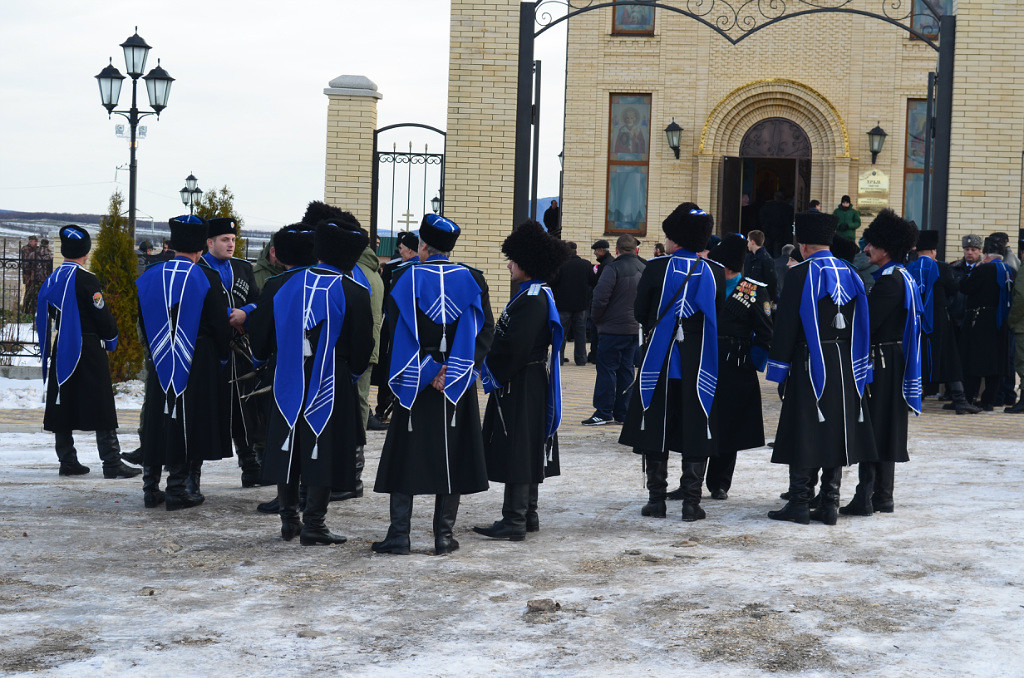
Leadership Change in Terek Cossack Military Points to Increasing Government Role
Publication: Eurasia Daily Monitor Volume: 12 Issue: 50
By:

The Terek Cossack Military is undergoing profound changes as its leaders are systematically replaced with new figures, backed by the government. The change is especially visible in the largest part of the Terek Cossack force, the Stavropol region Cossack district. The previous ataman (chieftain) of the Stavropol branch, Alexander Falko, stepped down and was replaced with Alexander Zhuravsky. The governor of Stavropol region, Vladimir Vladimirov, apparently gave his consent to Zhuravsky’s candidacy. However, some Cossacks appeared to be disappointed with Zhuravsky’s candidacy since he would have to step down in 2016, when he turns 60, according to government regulations (Kazak26.ru, March 2). Zhuravsky also, reportedly, did not even appear in person during the Cossacks’ elections procedure, but still was approved automatically, at the government’s request (Kazak-center.ru, March 11).
Government regulations apply to the so-called “registered” Cossacks, who are financed by the state. At the same time, they are not part of the army or police. This mixed legal status has allowed the Russian government to use Cossack forces in many conflicts in post-Soviet countries. Even though the government supported and armed the Cossacks, they would still appear as “volunteers” and relieve Moscow of embarrassing explanations about its involvement. The conflict in Ukraine is the most recent example of putting Cossack “volunteers” to use, including Terek Cossack forces (Mail.ru, April 5, 2014).
The Terek Cossack Military is inherently controversial because of its background and history, which is cherished by Cossacks. On February 22, for example, the Terek Cossacks in the city of Yessentuki, Stavropol region, celebrated the anniversary of the Yermolov Cossack battalion. The Aleksei Yermolov motorized infantry Cossack battalion reportedly displayed great valor during the Russian-Chechen war (Terkv.ru, accessed March 18). However, the Chechen government and the Chechens are hardly likely to appreciate the Cossack battalion that killed Chechens. Adding insult to injury, the Russian general for whom the Cossack battalion is named, Aleksei Yermolov, was known for his brutality at the time of the Russian conquest of the North Caucasus, in the 19th century, and remains especially disliked by the Chechens to this day.
The Russian government’s decision to create state-registered Cossack communities has had the unintended consequence of splitting the Cossacks. Thirteen Cossack organizations that are not part of the Terek Cossack Military exist in Stavropol region alone. Meanwhile, the government’s ability to finance the Cossacks is projected to decrease. The current level of financing of the Terek Cossacks is expected to be cut by approximately $270,000. In an interview with the Kavkazskaya Politika website, Alexander Zhuravsky, the ataman of the Stavropol Cossacks, explained the mechanism of self-financing of the Cossacks. Apparently, the government allotted large swaths of land to the Cossacks. The land allotments are so extensive that the Cossacks, as a rule, cannot work them because of a lack of such resources as equipment, manpower and so on. So, the Cossacks rent the land to farmers. Since the redistribution of the funds the Cossacks receive from such operations is not transparent, to say the least, there are constantly conflicts within their ranks. When few receive the benefits that are supposed to be distributed among all Cossacks, the solidarity of the Cossack forces naturally plummets (Kavkazskaya Politika, March 9). The government has managed to rally Cossacks for the Anti-Maidan movement, but it is unlikely the Cossacks would be of use if any significant public campaign against the government started in Stavropol region.
The leader of the Terek Cossacks in Stavropol says the Cossack forces should be the backbone of the regional governor’s reserve. Now all other North Caucasian governors may also require that the Cossacks become their personal guards. Zhuravsky says the Cossacks’ destiny is “to serve the Russian state” (Kavkazskaya Politika, March 9), but it is unclear why Cossacks are needed in place of the army, the police and other government agencies that protect the Russian government’s interests. Zhuravsky alludes to invisible forces trying to destabilize the country.
Cossacks have become part of Russian military units in southern Russia, especially in Stavropol region. Apart from the Yermolov battalion, a Cossack regiment is stationed in the city of Stavropol and a Cossack brigade is stationed in the city of Budyonnovsk (Terkv.ru, accessed March 18). Back in 2012, the government decided to expand Cossack units, particularly in the North Caucasus and the Russian Far East (Izvestia, August 3, 2012).
The new Cossack forces were supposed to turn the Cossacks into a reserve force for the president of Russia. However, the war in Ukraine has shown that, even though Cossacks have taken part in the hostilities, they are unlikely to have a decisive impact on the course of the conflict. The primary reason for setting up Cossack forces appears to be based upon the notion of creating a paramilitary force inside Russia that is imbued with the ideology of Russian nationalism. This would have been harder to achieve in government agencies, but it is possible in Cossack units, which may have their own entry requirements and rules but are still under direct government control.




